
-
Find the right food for your petTake this quiz to see which food may be the best for your furry friend.Find the right food for your petTake this quiz to see which food may be the best for your furry friend.Featured products
 Small & Mini Mature Adult 7+ Dog Food
Small & Mini Mature Adult 7+ Dog FoodHill's Science Plan Small & Mini Breed Mature Adult Dog Food with Chicken is a complete pet food, specially formulated with ActivBiome+ Multi-Benefit Technology.
Tailored nutrition to support graceful ageing in small dogs. Specially made with a synergistic blend of nutrients for energy & vigor.Shop Now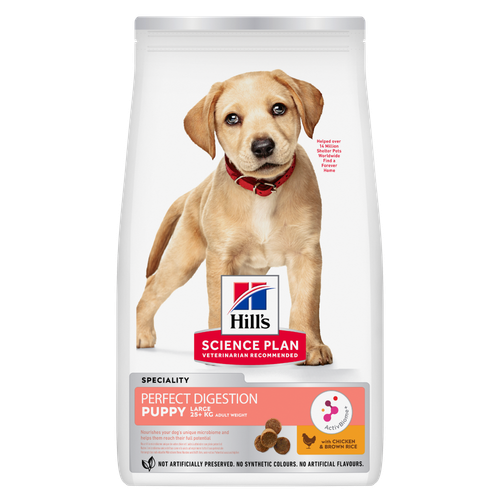 Perfect Digestion Large Breed Puppy Food
Perfect Digestion Large Breed Puppy FoodPrecisely balanced nutrition with Hill's ActivBiome+ prebiotic blend actively contributes to supporting digestive health and overall well-being to help your pet feel their best
Shop Now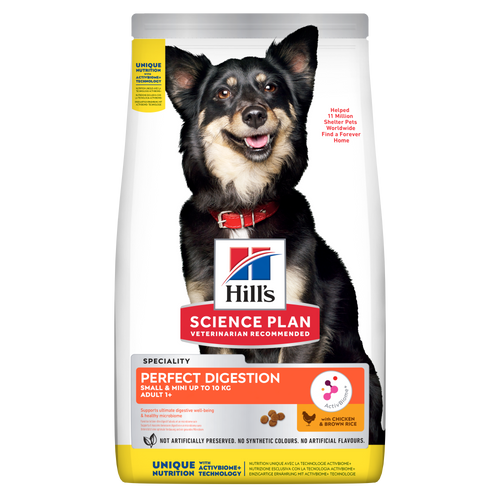 Perfect Digestion Small & Mini Adult Dog Food
Perfect Digestion Small & Mini Adult Dog FoodHill's Science Plan Perfect Digestion Small & Mini Breed Adult Dog Food with Chicken & Brown Rice supports ultimate digestive well-being & a healthy microbiome.
Shop NowFeatured products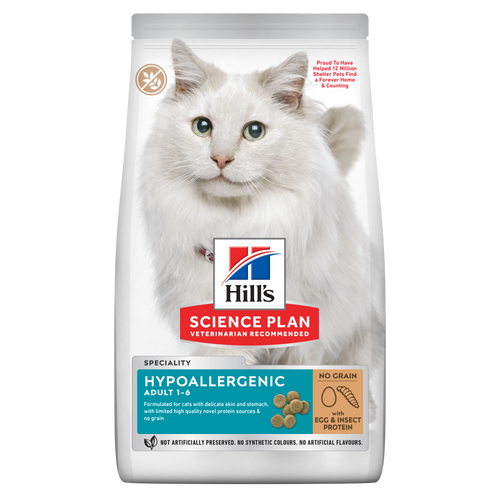 Hypoallergenic Dry Cat Food
Hypoallergenic Dry Cat FoodHILL'S SCIENCE PLAN Hypoallergenic Adult cat food with egg & insect protein is a complete pet food for adult cat 1–6 years old. It's formulated for cats with delicate skin and stomach, with limited high quality novel protein sources & no grain.
Shop Now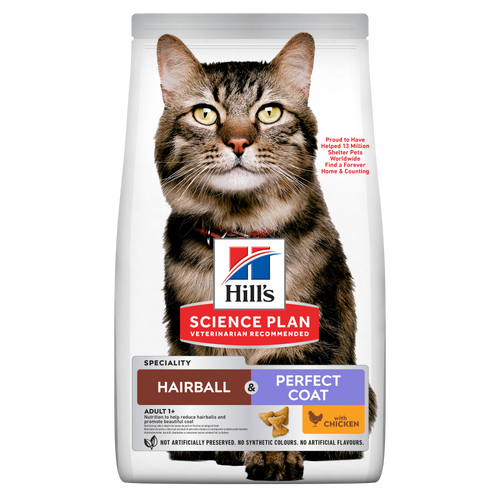 Hairball & Perfect Coat Adult Cat Food
Hairball & Perfect Coat Adult Cat FoodHill's Science Plan HAIRBALL & PERFECT COAT Adult cat food with Chicken is specially formulated to effectively help avoid hairball formation in adult cats while promoting a beautiful coat. Thanks to its mix of essential Omega-6 fatty acids, this food benefits the cat's skin and fur keeping them healthy and shiny. Our Advanced Fibre Technology helps reduce hairballs by naturally promoting their passage through the gut. This food is formulated with high-quality protein for a perfectly balanced, great-tasting recipe.
Shop Now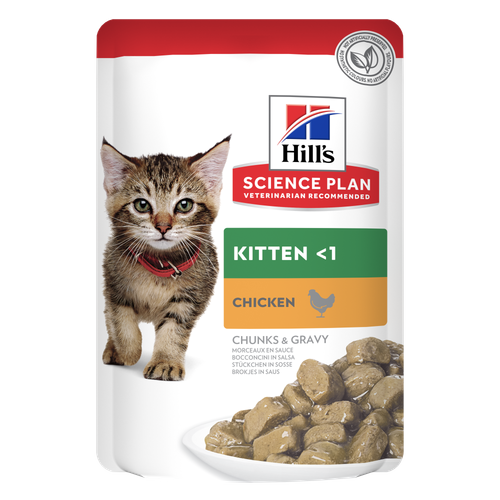 Kitten Food
Kitten FoodTender chicken chunks in gravy for kittens, with omega-3s for healthy eye & brain development and high-quality protein to support muscle growth. With balanced minerals to promote strong bones & teeth.
Shop Now -
Dog
- Dog Tips & Articles
-
Health Category
- Weight
- Food & Environmental Sensitivities
- Urinary
- Digestive
- Joint
- Kidney
-
Life Stage
- Puppy Nutrition
- Adult Nutrition
- Senior Nutrition
Cat- Cat Tips & Articles
-
Health Category
- Weight
- Skin & Food Sensitivities
- Urinary
- Digestive
- Kidney
-
Life Stage
- Kitten Nutrition
- Adult Nutrition
Featured articles Pet Food Storage Tips
Pet Food Storage TipsWhere you store your cat and dog food can make a big difference in the quality and freshness once it is opened. Here are some common questions and recommendations for optimal storage for all of Hill’s dry and canned cat and dog food.
Read More Understanding Your Pet's Microbiome
Understanding Your Pet's MicrobiomeLearn what a pet's microbiome is, how it contributes to your pet's gut & overall health, and why nutrition is important in maintaining healthy microbiomes.
Read More The Right Diet For Your Pet
The Right Diet For Your PetLearn what to look for in healthy pet food & nutrition, including ingredients, quality of the manufacturer, your pet's age, and any special needs they have
Read More -


Dog poop: it may not be the most pleasant topic, but healthy dog poop is often an indication of a healthy pup. Keeping an eye on the characteristics of your dog's poop can be a good way to track any health problems he might be experiencing. Let's take a look at what differentiates healthy dog poop vs. abnormal poop that could be a sign of underlying health problems.
What Does the Perfect Poop Look Like?
Dog poop has four main "C" characteristics: color, content, consistency, and coating. The color of healthy dog poop should be chocolate brown. For the content part of the poop, you may want to let your veterinarian do the "dirty" work. Most people won't see much of anything inside the poop without a microscope. Healthy dog poop should also be a little firm in consistency, like play dough. Ideally, it should be in log shapes with little cleaves in it that if you were to roll it, it would break into smaller pieces. Finally, healthy poop does not have a coating on it at all. So, if your pooch has a chocolate-brown, somewhat firm, coating-free poop with nothing noticeably sticking out of it, you are all clear. However, read on for signs that could indicate a health issue.


Tasty Tips
When to be Alarmed by Your Pet's Poop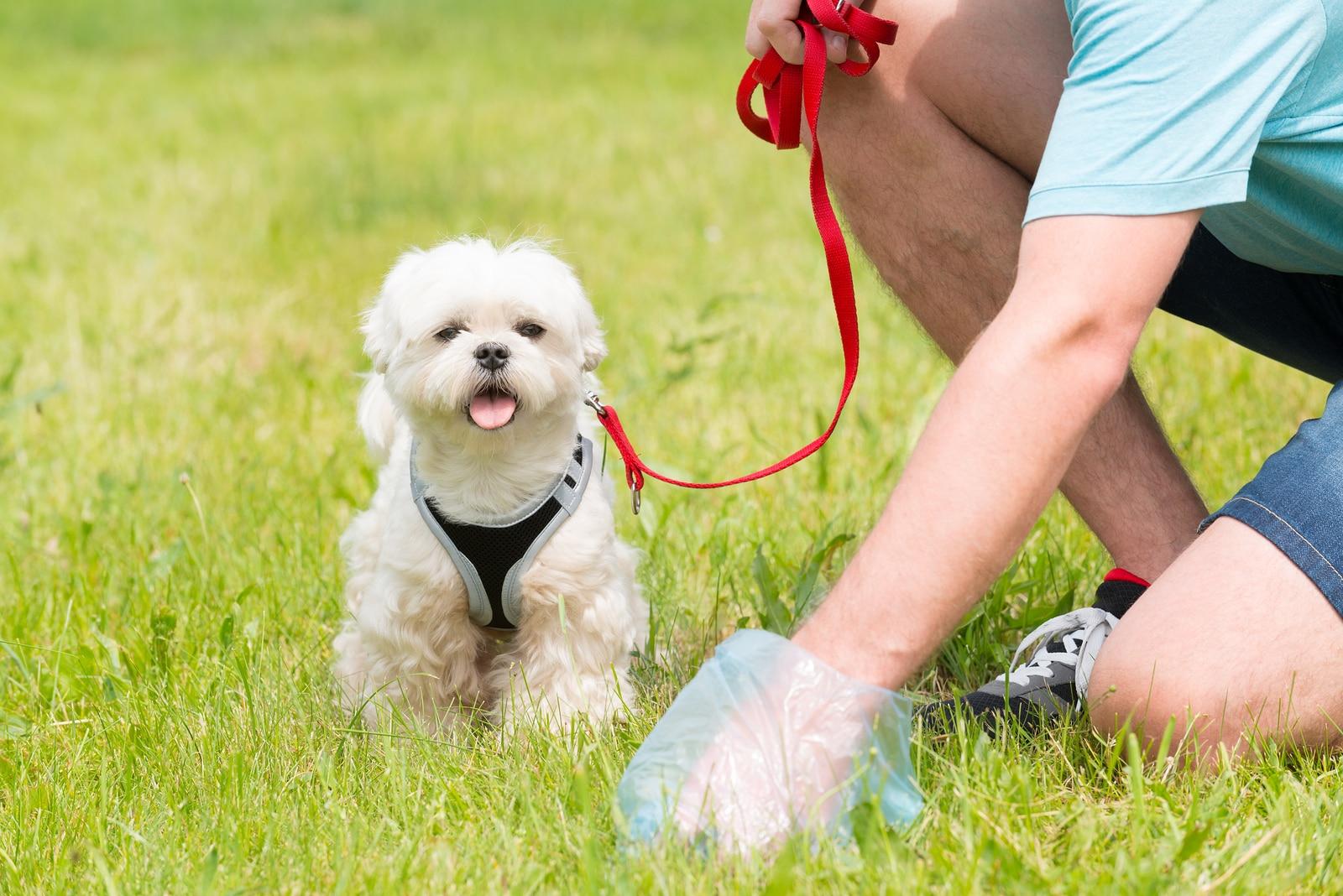
Again, the four Cs of pet poop can help you determine when your dog may be sick. Although it may not be pleasant, observing your dog's stool while it is fresh is the easiest time to catch irregularities.
Content Concerns
- Worms: These could be long and skinny or look like little pieces of rice. Again, you should only be concerned if these appear in the fresh sample. If stool sits outside for a while, worms may find their way to it.
- Fur: Big clumps of fur in the stool could be a sign of over grooming, allergies, or skin disease. Keep an eye on how often you are seeing fur in the stool and discuss it with your vet.
- Foreign materials: Grass, plastic, rocks, cloth, and even money can sometimes be found in your dog's stool, after all dogs can sometimes ingest some odd things. Although what goes in often comes out, if you notice strange items in your dog's stool, you may want to call the vet to make sure they don't want to do a thorough check or x-ray. In some cases, dogs have gotten foreign objects stuck in their digestive tract and they need to have them surgically removed. This is why it is best to call your vet immediately if you notice bits of cloth or plastic in your dog's poop.
Coating Clues
If you're picking up your pet's stool off the grass, there shouldn't be any sort of trail left behind. A coating of mucus often accompanies large bowel inflammation and usually occurs concurrently with diarrhea. If you notice this mucus in your dog's stool for more than one day, you should contact your vet to gauge your next steps.
Color Key
Below is a simple guide of what healthy dog poop looks like vs. unhealthy based on color.
- Brown: A healthy pup's bowel movements should be chocolate brown in color.
- Green: Green stool could indicate that your dog is eating grass, perhaps to soothe an upset stomach.
- Black or maroon: This could be a sign of bleeding in the stomach or the small intestines.
- Red streaks: This is another sign of bleeding, probably in the lower gastrointestinal tract.
- Yellow: Yellow stool could mean problems with the liver, pancreas, or gallbladder.
- White spots: Your pup might have worms if you notice small white spots in his stool.
Consistency
When evaluating the consistency of stool, most vets use a scale from one to seven, one being very firm (almost dry) and seven being very runny. Appropriately, the optimal consistency falls at a number two on the scale. However, if your dog's stool is a little loose, don't get alarmed. Just monitor your dog's poop to see if it keeps getting softer and softer, and keep samples refrigerated in case you do need to take him to the vet.
It's important to take healthy stool samples to wellness visits for your pet, so that if your pet does start to show signs of an unhealthy stool, your vet has some past records to compare it to. If your dog is experiencing what seems to be healthy stools, but has other signs of illness (not eating, vomiting, lethargy, etc.), it is still a good idea to take a stool sample anytime you need to take your pet to the vet. Many times, bits of information can be discovered by putting the stool sample under a microscope or running other tests.
Collecting the Stool Sample
It's very likely that you have found many different ways to clean up poop around your yard or while out for a walk. From pooper scoopers to special biodegradable bags, when it comes to cleaning up dog feces, there is no shortage of equipment. So, when you're collecting a healthy dog poop or even an unhealthy stool sample to take to the vet, be sure to use a clean bag, pick the sample up gently, and place into a clean, shallow plastic container with a lid. Refrigerate the sample until you are able to get it to the vet. If the poop is too watery to pick up, be sure to take a few clear photos with your smartphone to show the consistency. You can also try to get some of the wet poop into a container using a clean craft stick or plastic spoon. Never take a stool sample that has been sitting in the heat or in the grass for long periods of time. These samples could have dirt or parasites that were not part of the stool. One last thing to note: cleaning up dog poop quickly is also beneficial to your dog. Too much feces lying around in the backyard could lead your dog to start eating his own poop. There are also issues with public health where dog feces can seep into the water table and contaminate water sources. It should also be mentioned that you should wash your hands after picking up any poop even if you wear gloves or use the bag over your hand just to be safe.
Final Poop Pointers
Remember, your dog's stool tells a lot about his health. Good dog owners should follow these tips to better understand their dog and his health:
- When your dog poops, look for the four Cs: color, content, consistency, and coating.
- Always take fresh stool samples to every vet appointment.
- Clean up dog poop immediately whether on walks or in the backyard.
- If your dog has an accident in the house, get him outside right away and try to positively reinforce proper poop procedure.
- Notify your vet immediately if your dog's stools change drastically, your dog starts eating his own poop, having frequent accidents in the house, or if he has gone more than 24 hours without pooping.
Dog poop isn't a subject matter that we all enjoy talking about, but it can be a good indicator of your dog's overall health. Catching signs early can help ensure keeping him healthy.


Chrissie Klinger is an educator, writer and mother of two children, three dogs and three cats. Her dog Jake loves sitting on her lap every chance he gets! She enjoys living an active and eco-friendly lifestyle in rural Pennsylvania.
Related products

Hill's Science Plan Perfect Digestion Small & Mini Breed Adult Dog Food with Chicken & Brown Rice supports ultimate digestive well-being & a healthy microbiome.
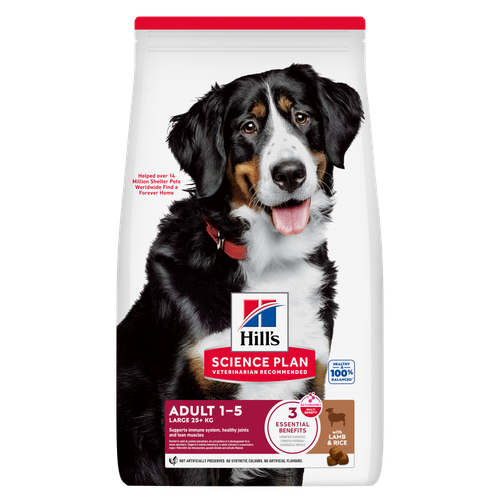
Hill's Science Plan Large Breed Adult Dog Food with Lamb & Rice is a complete pet food, specially formulated with ActivBiome+ Multi-Benefit Technology.
This food is specifically designed to fuel the energy needs of large breed dogs during the prime of their life.

Hill's Science Plan Small & Mini Breed Mature Adult Dog Food with Chicken is a complete pet food, specially formulated with ActivBiome+ Multi-Benefit Technology.
Tailored nutrition to support graceful ageing in small dogs. Specially made with a synergistic blend of nutrients for energy & vigor.

Precisely balanced nutrition with Hill's ActivBiome+ prebiotic blend actively contributes to supporting digestive health and overall well-being to help your pet feel their best
Related articles

Discover the causes, signs, and treatments of kidney disease in dogs and find methods of supporting your dog's kidney health. Learn more at Hill's Pet South Africa.

Discover how the field of dog science is giving us more and more insights into the inner workings of our furry best friends.

Dog obesity is a significant problem - learn more about helping your dog become trimmer and healthier through improved nutrition.

Learn about snake bites on dogs, including clinical symptoms to look for, what to do if you think your dog was bitten, and treatment & prevention options.

Put your dog on a diet without them knowing
Our low calorie formula helps you control your dog's weight. It's packed with high-quality protein for building lean muscles, and made with purposeful ingredients for a flavorful, nutritious meal. Clinically proven antioxidants, Vitamin C+E, help promote a healthy immune system.
Put your dog on a diet without them knowing
Our low calorie formula helps you control your dog's weight. It's packed with high-quality protein for building lean muscles, and made with purposeful ingredients for a flavorful, nutritious meal. Clinically proven antioxidants, Vitamin C+E, help promote a healthy immune system.

